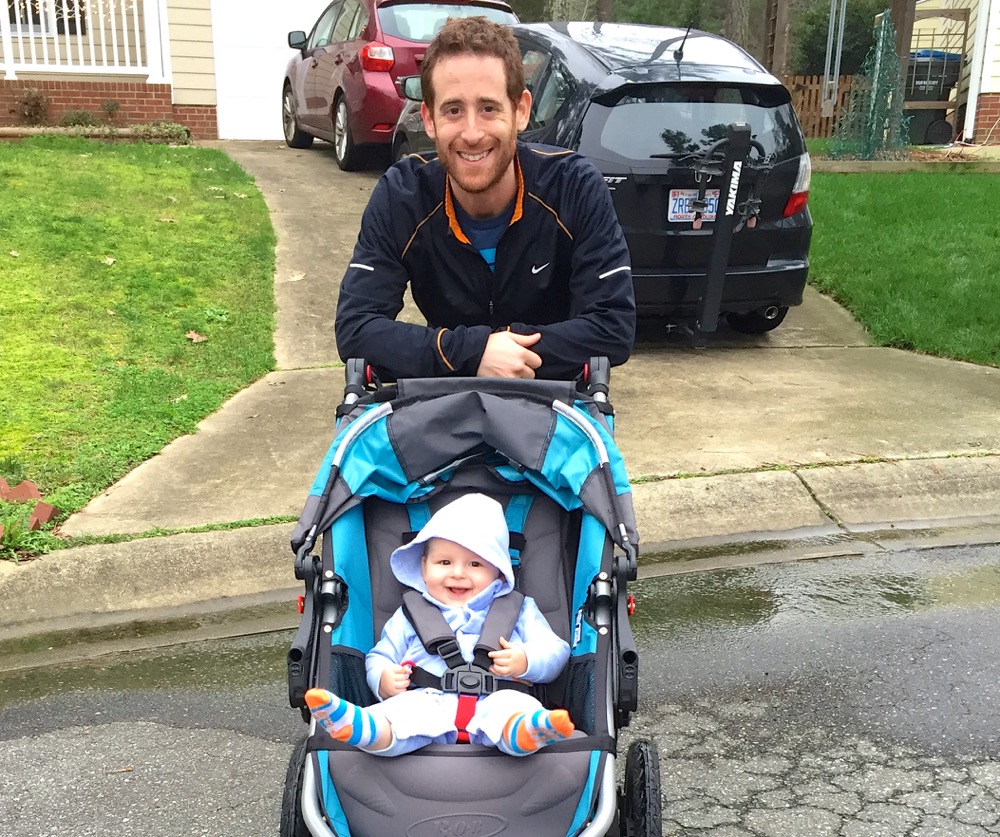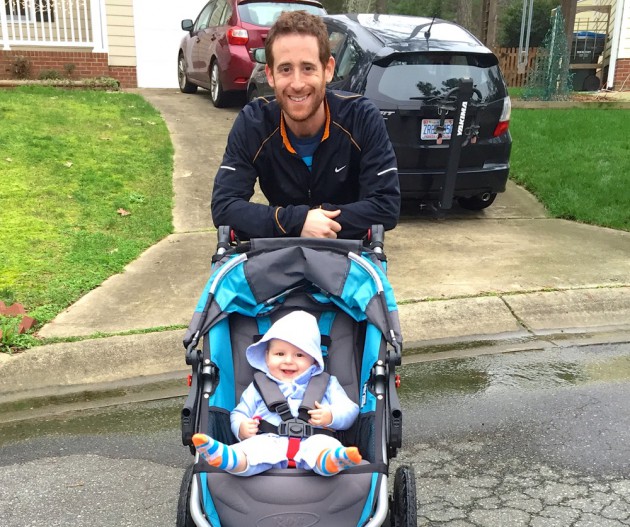By Evan Adler
Imagine running down the road in the early morning. The dew glistens on the grass in the sunrise’s glow. A peaceful silence accompanies the sound of your feet on the pavement while your heart rate lightly resonates in your head.
Now imagine adding a 50-pound sled containing the loudest, most malodorous, most adorable, most precious, and most important piece of cargo you’ve ever had the privilege to push.
It was almost a year ago that a huge box was delivered to my house containing the next stage of my running career. The jogging stroller had arrived! It was life-changing enough having a new, wonderful, little person living in my house and requiring bi-hourly feedings, but now, going for a run required this huge contraption. My running life would never be the same again (at least until he is 4-years-old or 70 pounds, whichever comes first).
As a Physical Therapist who treats endurance athletes, I knew that running with a stroller could contribute to injuries. I also knew that if one could avoid those potential pitfalls, there would be many positive aspects to running with an infant: increased strength and speed from “resisted” training, increased bonding time between you and your runner-to-be; effective use of nap time; adapting your child to the movements of the stroller, and encouraging regular exercise.
Avoid Negative Adaptations and Reap the Benefits
When using a running stroller your gait will change. You have added extra machinery that requires more energy to your runs, which means you are subjected to a number of potential mechanical gait changes
- Unilateral Arm Swings: Most strollers have a safety strap that you should wear around one wrist when running. This is an important safety measure that should absolutely be taken; however, when you are consistently strapped to the stroller with the same hand this promotes an unequal rotation of your trunk and a mismatched amount of swing with your arm from one side to the other. This change in your upper body rotation can lead to neck and shoulder pain, an over-rotation of your hips to compensate, and lower body pain.
Solution: switch the strap hand from run to run to even out any unwanted asymmetrical rotations.
- Widened Gait: I work with a lot of runners who have a crossover gait (picture someone running on a tightrope). A widened gait is the opposite; the runner has their feet spread apart and they run “duck-style.” When pushing a stroller, this usually results from fear of kicking the stroller during your stride. A duck-footed stride may also come from increased external rotation at the hips and landing in a position causing increased pressure and strain on the ankle, knee, and hip due the malalignment of the joints and the continued forward direction of the force of the body.
Solution: Strive for your toes to point forward as you run. In addition, address the distance your body is from the handle of the stroller so your arms are neither too far nor too close to your body and you can take a normal stride without kicking the stroller.
- Shortened Step Length: Because of the apprehension mentioned above, it is common for your stride to shorten slightly in length.
Solution: Watch how you land. Continue to land each stride with your center of mass over your base of support. As long as your body remains centered over your foot and you are not merely taking shuffle-steps, you can shorten that stride without injury.
- Fatigue: From the first run I took with my son in tow, I found that I couldn’t run nearly as far with the stroller as I could without it. Whenever you start to make changes in your gait pattern, you will experience fatigue quicker due to new muscle firing patterns and neuromuscular signals. Learning a new pattern is tiring.
Solution: Use your time wisely and focus on your proper gait mechanics and embrace the shortened run time until your body adapts to you pushing a sled while running and you start to build up increase cardiovascular reserves and muscular strength.
These simple solutions can help you enjoy running with your child from a very early age. The stroller owner’s manual recommends waiting until the infant is 8 weeks old. At that point you can use a car seat adapter for the stroller to transform it into a mega-stroller!
Embrace the challenge of the stroller and use the above tips to keep yourself healthy in the process. Running with my son in the stroller has become something I treasure. One day he’ll be running beside me (or lapping me), but for now, I’ll happily have him as my strolling partner.
# # #
Evan Adler PT, DPT is a Physical Therapist at ATI Physical Therapy. He is an avid runner and sometime triathlete who enjoys getting involved with the local running community and spending time with his wife and son.








